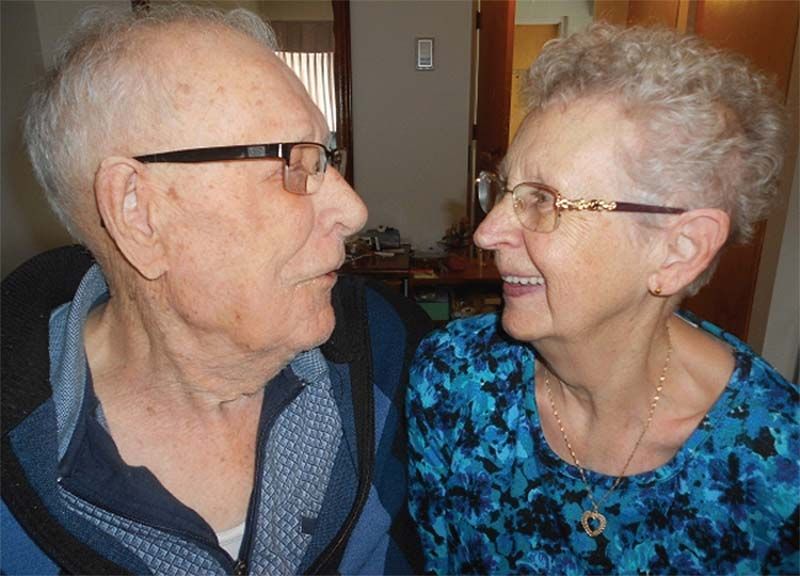Catherine Reynolds | Jun 05, 2019
Bill Campsall never thought he’d survive the war.
Sitting in his room in a retirement home in Amherstview, the gentle 95-year-old’s eyes glisten with tears as he talks for the first time about his service, 78 years earlier, as a paratrooper in WWII.
“I hadn’t got my notice yet,” he says about his voluntary enlistment in October, 1941.
Born and raised on a farm in Sydenham, Bill went to Fort Henry in Kingston at the tender age of 17 to join the Canadian Armed Forces. After a routine medical review, he was offered a medical certificate to discharge him from infantry service, or hernia surgery. He chose surgery, and by the next March, he was in basic training in Cornwall.
“When that finished, I went to CFB Borden for advance training, where I was one of a handful of soldiers hand-picked for special services,” says Bill, proudly. “We were sent to Manitoba for tower jumping and classwork to prepare us for parachute jumping in Germany.”
Bill remembers his first night-jump, when 60 soldiers refused to jump out of the airplane. That left Bill and 14 others to complete the program, which included three weeks of explosives training.
“We had to carry a one-ounce bottle of nitroglycerine in training,” he explains. “Six soldiers wouldn’t do it which left eight of us, besides myself. They taught us to land on our heels because we carried the nitroglycerin on our chests and a timer in our back pockets. We jumped out of a Halifax bomber or glider, depending on the mission.”
Bill and his special services unit landed in Scotland in January, 1942.
“They took us off the train in Yorkshire and sent us to an estate for lodging,” he notes.
According to Bill, a lieutenant at the time of his service, the military had Europe marked off in zones and had effective communication through an underground network.
“We boarded a plane in Yorkshire and dropped into the continent between midnight and 2am,” he explains. “Through contact with underground, we were brought back by fishing boats.”
Bills eyes fill with tears, remembering a break from the fighting on the third week of July to visit a wax museum of the Royal Family. Over four hours, a tour guide named Lizzy gave them a detailed account of the wax figures located in an underground cavern. When Bill learned Lizzy’s last name was Windsor, he soon realized his tour guide was Princess Elizabeth of the British Royal Family.
“It was quite an experience,” he said.
The next month, it was almost daylight and Bill was returning from a mission with three of his men when they were hit with a detonated hand grenade.
“My three-men were killed, and I was pretty banged up,” he says quietly.
When Bill awoke in a field hospital, he discovered the near fatal damage to his lung, heart, stomach and bowel. He lost almost 50 pounds in one month as he fought for his life.
By January, he was stretchered aboard a boat to Halifax with 600 other wounded soldiers. He was transported from the East Coast to a hospital in Kingston where he was discharged on March 31, 1945. Bill was only 21 years old.
Awarded a medical disability pension, Bill reunited with his girlfriend Marg, whom he quickly married that fall. The first of the couple’s three children arrived a year later.
Over his lifetime, Bill held many jobs, such as a turnkey at the county jail, manufacturer at Alcan, bus driver in Kingston and operator at a water sewage treatment plant.
More Stories
- Burn Ban Off in North Frontenac, Addington Highlands - Reduced to Level One in South and Central Frontenac
- The Resurgent Sharbot Lake County Inn and Crossing Pub
- Towards Then End of Trail
- Silver Lake Pow Wow
- Central Frontenac Declares Former Office, Harvey Building, Surplus Properties
- Neighbours Could Lose The War Over Gravel Point - But Still Win The After Battle
- Sydenham Legion Bass Tournament
- From Performing Arts To The Written Word
- Legion Corner
- The Sun Shines On The Parham Fair

